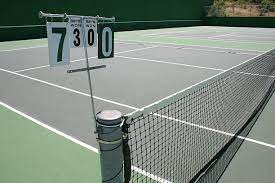The Mystery of Tennis Scoring

If you have ever traveled down to the tennis courts and played a little game of tennis then you probably know about the unnecessary complexity of the traditional scoring. You would think that every point you get your score would increase from one to four, but for whatever reason the tennis creators have you start with love (zero) then every point you get it increases by fifteen, thirdy, fourty, and then deuce when both players have fourty. If you get to deuce, then in order to finish you have to win by two. I have never understood the reason for this confusing score system, and I have always suspected that the creators secretly prayed on every player’s downfall because you would be lying if you said that you have never messed up the score.
Present-day tennis can be traced all the way back to a French handball game called jeu de paume, or game of the palm. Originally, the game was played with your hands until they introduced a leather glove which over time turned into the racket we know and love today. The tennis ball also went over many modifications going from wood to even being filled with a cellulose material to get the bright and bouncy tennis balls we use today.
In 1873, Major Walter Wingfield took the popularity of jeu de paume and adapted it to the game we know today. The scoring in tennis is also suspected to come from 12th to 13th century France where it is possible that they used a clock as the scorekeeper. Using the increments of 15, 30, and 40 minutes as points were gained. The term used for zero was originally used from the French word “l’oeuf,” and over time people started changing it into the common term love. The game tennis has a historical past of adaptation and change that was inevitably able to become popularized into the beloved game it is today.

Maisie is a senior and a second-year member of the Crimsonian Staff. She is a part of the tennis team and plays the violin in the high school orchestra.





